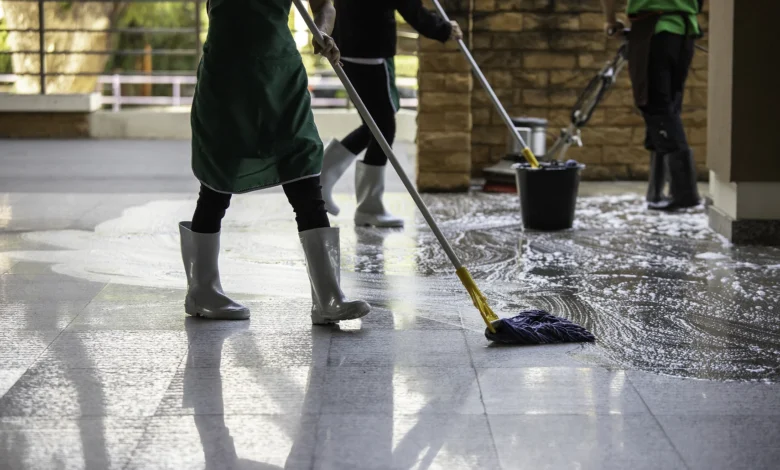How Long Does Water Damage Restoration Take in New Jersey?

Water damage is one of the most challenging emergencies homeowners and business owners can face, especially in New Jersey, where heavy storms and aging infrastructure can increase risks. If your property experiences water damage, understanding how long the restoration process takes is critical for planning and minimizing losses. Water damage restoration in NJ requires timely action to prevent further damage and costly repairs. In this article, we’ll explore the typical duration of water damage restoration in New Jersey, the factors that influence this timeline, and why acting promptly with professional help can make all the difference.
What Is Water Damage Restoration?
Water damage restoration refers to the process of cleaning, drying, repairing, and restoring a property affected by water intrusion. This can result from various causes such as flooding, pipe bursts, roof leaks, or storms—events common in New Jersey due to its coastal location and seasonal weather patterns.
The restoration process aims not only to remove the water but also to prevent further damage like mold growth, wood warping, and structural issues. Restoration specialists use specialized equipment and techniques to bring your property back to its pre-damage condition safely and efficiently.
Factors That Affect the Duration of Water Damage Restoration
The time required for water damage restoration varies widely based on several critical factors:
Extent and Type of Water Damage
- Clean water damage (e.g., from broken pipes) is easier and faster to manage.
- Contaminated water (such as sewage or floodwater) requires more extensive cleaning and sanitization, lengthening the restoration time.
Size of the Affected Area
A single room with minor flooding will obviously take less time to restore than an entire home or commercial building impacted by widespread water intrusion.
Materials and Structure
Water affects drywall, wood, concrete, carpet, and upholstery differently. Some materials dry faster or can be restored, while others may require removal and replacement.
Weather Conditions
In New Jersey, humid summers or cold winters can impact drying times and equipment effectiveness.
Accessibility and Location
Properties that are harder to reach or located in areas prone to repeated flooding may face longer restoration timelines.
Response Time and Professional Availability
Prompt response from experienced New Jersey restoration companies can drastically shorten restoration times by preventing secondary damage.
Typical Timeframes for Water Damage Restoration Stages
Water damage restoration involves several stages, each with its typical duration:
- Inspection and Assessment: Usually completed within a few hours to a day, this stage involves evaluating the damage extent and planning the restoration.
- Water Extraction: Removing standing water can take several hours to a day, depending on volume and access.
- Drying and Dehumidification: This is the most time-consuming phase, often taking 2-7 days. Thorough drying prevents mold growth and structural damage.
- Cleaning and Sanitizing: After drying, cleaning surfaces and contents may take 1-3 days, especially if contamination is involved.
- Repairs and Reconstruction: This varies widely depending on damage severity and can range from days to weeks.
Detailed Explanation of Each Stage
Inspection and Assessment
Water damage restoration professionals begin by inspecting the property with moisture meters and infrared cameras to detect hidden moisture. This initial step is crucial for an accurate restoration plan. The speed and thoroughness here set the tone for the entire process.
Water Extraction
Using pumps and wet/dry vacuums, technicians remove excess water quickly. Time depends on how much water is present and how easily equipment can be brought inside.
Drying and Dehumidification
Industrial-grade dehumidifiers and air movers are used to dry walls, floors, and furniture. Because moisture can seep into materials deeply, this phase cannot be rushed without risking mold and long-term damage. Climate and material types influence drying speed.
Cleaning and Sanitizing
Especially important for contaminated water damage, this stage involves disinfecting affected surfaces and belongings to ensure safety and prevent odors.
Repairs and Reconstruction
Restoration experts replace damaged drywall, flooring, and sometimes structural elements. This step may also include repainting and refinishing to return the property to its original condition.
Common Delays and How to Avoid Them
New Jersey’s weather can cause delays, especially during hurricane season or heavy snowfalls. Insurance paperwork and claims processing can add days or weeks to the timeline. Hiring reputable restoration companies who understand insurance processes and maintain good communication helps reduce such delays.
Structural challenges such as mold infestation or electrical damage might also require additional inspections and repairs, extending the restoration time. Quick initial response and regular monitoring are key to avoiding these complications.
Importance of Quick Action and Professional Help
Delaying water damage restoration can lead to serious consequences, including mold growth, weakened structural integrity, and health hazards from bacteria and allergens. Engaging certified New Jersey water damage restoration professionals ensures:
- Faster response and expert evaluation
- Use of industry-grade equipment for effective drying
- Comprehensive cleanup and mold prevention
- Proper documentation for insurance claims
A professional team works not only to restore but also to protect your property from future problems, optimizing restoration time without compromising quality.
Read Also: Top Reasons a Business Should Hire Specialized Technical Services
How to Prepare for Water Damage Restoration
After a water damage incident, there are practical steps you can take while waiting for professionals:
- Turn off electricity and gas if safe to do so
- Remove valuables and furniture from affected areas if possible
- Avoid walking through flooded rooms to prevent injury or further damage
- Document the damage with photos for insurance purposes
When restoration experts arrive, they will guide you through the process and keep you informed about progress and expected timelines. Clear communication helps ensure smooth coordination.
Conclusion
The duration of water damage restoration in New Jersey depends on a variety of factors including damage severity, type of water, materials affected, weather, and professional response time. While some restoration projects can be completed within a few days, others involving extensive contamination or structural repairs may take weeks.
Understanding these timelines helps property owners prepare, act quickly, and choose trusted professionals to minimize damage and restore safety. If you experience water damage, immediate action and expert assistance are essential. Relying on certified experts specializing in water damage restoration in NJ ensures a fast, effective, and thorough recovery for your property.



